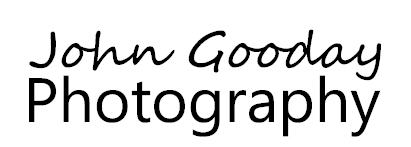European Bee eaters fighting over a nest site, Hungary May 2019
1DX II, 500mm f/4 II + 1.4x III, 1/2500, f/7.1, ISO 2000, tripod with Uniqball head, pop-up hide
Introduction
European Bee Eaters are busily nest building across Southern and Central Europe and Turkey after their long migration back from Africa. They’re very colourful birds and are always a popular highlight on my Spring wildlife photography workshops in Hungary. However, as many people have discovered, they can be rather tricky to catch in flight... especially when the photographer’s vision and movement is restricted by shooting from a hide, usually with just the tip of the lens poking through the camouflage netting. The problem is that they're really quite fast and they zig zag around the sky as they chase insects or fight with one another (I think of them as the next level above flying puffins in terms of difficulty). Using a long telephoto lens exacerbates the problem.
Setting the autofocus parameters
Canon autofocus parameter setting used for the photo above
I prefer to track the birds through the lens with the help of the camera’s autofocus. To do this, I set the auto-focus parameters to high sensitivity and limit the number of focus points used at any time (aka active focus points). For the shot above, I put the camera into AI Servo conyinual focus mode (that's AI-C for Nikon users) and used iTTR and zone focus on my Canon 1DX II. I set the autofocus parameters to a more extreme variation of Canon's built-in case 6. I set acceleration tracking and point switching sensitivity to maximum, along with a high tracking sensitivity number - take a look at the LCD screenshot above to see the details. . Basically, this set-up makes the autofocus system snap onto object that you have your active focus points over as quickly as possible, but it's quite twitchy and will lose focus easily unless you keep the focused points on the subject as it moves. This can require quite a bit of practice - if you’re struggling try starting with slower birds, such as herons and egrets, then slightly faster ones - gulls are good - until you work your way up to Bee eaters .
If you don’t happen to have a 1DX in your camera bag, don’t worry: you'll find the same autofocus system and parameters on Canon's 7D II, 5D S/R and 5D IV. Nikon's D5, D500, and D850 have a similar configurable AF system that will also track well in 3D AF mode.
Other considerations
It's also a good idea to use the focus distance limiter on your lens if you have one with an appropriate setting. For this shot, I set mine to 10m-infinity to eliminate the need for the camera to search the near-distance, leaving it to concentrate on the distance range that the birds were actually flying.
The larger the maximum aperture is on your lens, the better it will usually focus and track (remember, you don't need to have the aperture wide open when you actually shoot to get the benefit, so you can set a smaller aperture to give you the depth of field you desire).
To speed up subject lock-on, try pre-focusing the camera to roughly the distance the birds are flying - this makes it easier for the AF to find them when you start it. Don't try to start autofocus until the birds are a reasonable size in your viewfinder (I wait until they are larger than the central viewfinder circle). Use a gimbal or 2-way fluid tripod head for smoothest tracking, or a Uniqball (or similar double ball design head) locked in pan / tilt mode.
Set a suitably high shutter speed to avoid motion blur. For Bee eaters and a 700mm focal length, I've found 1/2500 to be the minimum practical successful speed - don't be afraid to push up ISO if necessary: a sharp picture with a bit of noise is much better than a clean but blurred photo!
Alternative approach
An alternative method to the above is to pre- focus on where you think the birds might pass through, set focus to manual, and fire a high-speed burst of shots as the bird passes through the point. It’s easier to use a remote control cable attached to the camera while you look through the hide window rather than trying to look through the viewfinder itself.
This technique is somewhat hit and miss (mainly miss, to be fair - expect to throw away a lot of blurred images. It requires luck and perseverance. The higher your camera frame rate and the lower your shutter lag (the delay between pressing the shutter and the camera actually firing) is, the more likely you are to get a sharp shot.
If you’d like to try your hand at photographing Bee Eaters (and Hoopoe, Roller, Red-footed Falcon, Kestrel, Buzzard… and many others) with expert guidance, you may be interested in joining one of my spring wildlife photography workshops in Hungary. I’ll be opening bookings for the 2020 workshops soon. If you’d like to receive full details in advance of then, just subscribe to my mailing list - it’s at the bottom of this page - or send me a message here,

